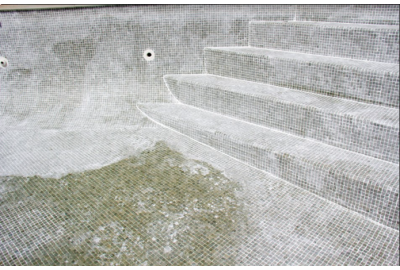Have you noticed that you have been filling up your pool a little too frequently lately? There are a number of explanations for this – either your pool is losing water due to evaporation, or there may be a leak either inside or outside of your pool and its plumbing.
Before you start to panic, try determining whether the loss of water is actually due to a leak, or if it is the result of natural evaporation. To determine the cause, you simply need a bucket and access to your pool’s steps.
Place the empty bucket on the second step of your pool and fill it up to match the level of your pool’s water. Make a marker on the line of water so that you can remember where your pool water level started.
Turn your pool pump off and proceed to leave the bucket as is, for 24 hours. Once this time has passed, come back to your bucket and check if the water level has gone down at all. If it has, and your pool water level is equal to that of the bucket, your water loss is simply due to evaporation. If the water in the bucket stayed the same, but the water in your pool has decreased, you have a leak on your hands.
If you want to narrow down the source of the possible leak, repeat this process leaving your pool pump on. If, after the 24 hours, your pool has lost a significant amount of water, your leak is most probably caused by something in your pool’s plumbing.
Now that you know you have a leak, what’s next? Well, your next step is to find the source of the leak. Sealants are designed to seal the walls of your pool, however, just like your pool equipment, sealants age and deteriorate. There could be a hole somewhere along the walls of your pool where the sealant has simply grown old. In order to solve this mystery, start to drain your pool, and observe how and where the water moves. If your pool drains quickly and all the way down, then your leak is most likely at the bottom of your pool.
If your pool levels stop draining once it has passed the leak, proceed to check the walls and ground around your pool for possible weaknesses. Once you have identified where the possible leak is occurring, carefully and without disturbing the water, squirt some colourful dye into the water and watch where the dye moves to. Theoretically, the dye should move toward the leak and proceed to leak out of your pool.
The next step in the process is fixing the leak… and while you can attempt to do this yourself, it is highly recommended that you call in an expert in to fix your leak.
If you are unsure where to begin or how to manage your leak, contact The Pool Team.

